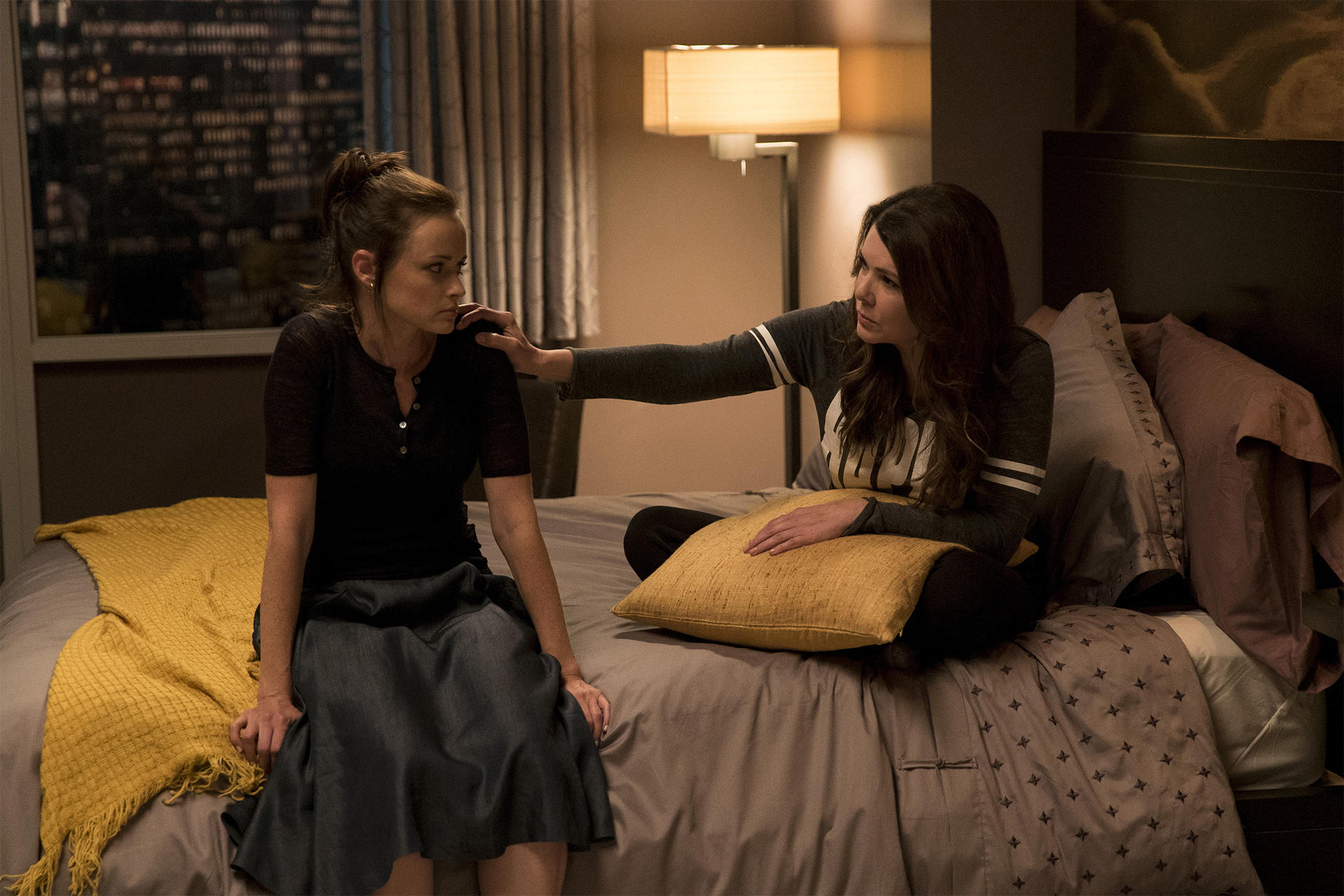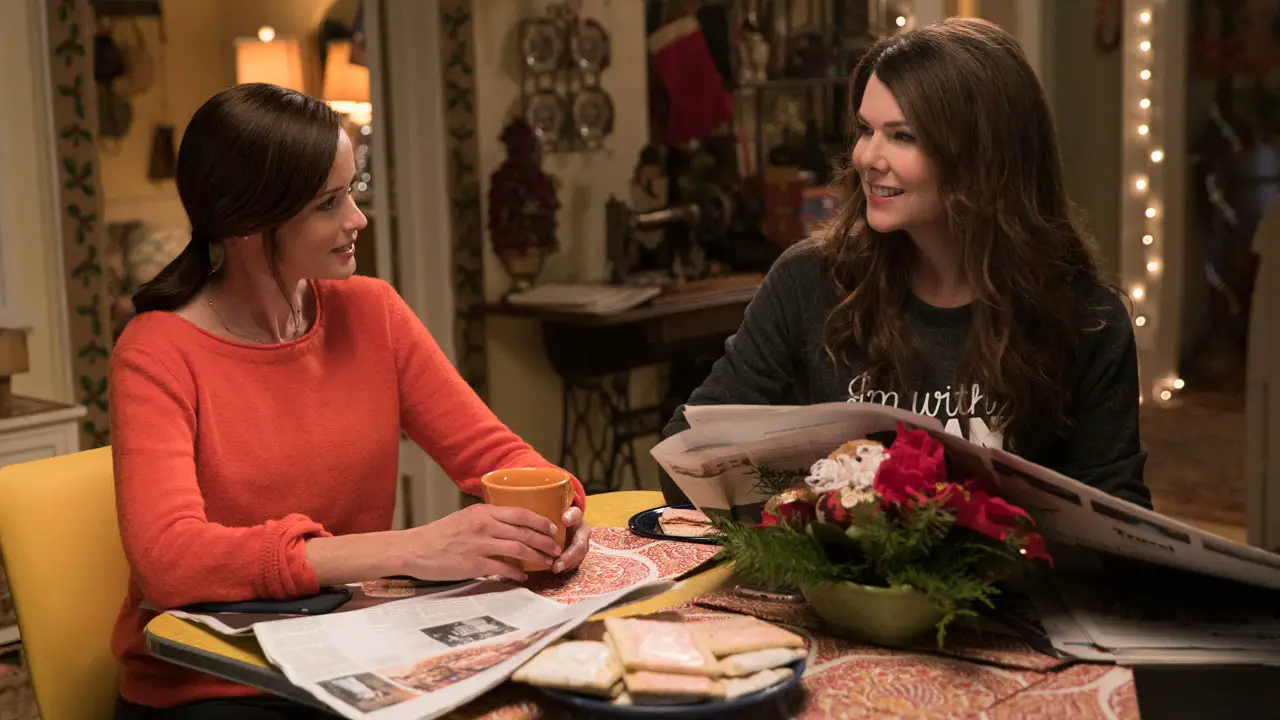In many ways, the hit show “Gilmore Girls” defined a generation of overly-caffeinated, witty, female go-getters.
Spunky single mother Lorelai and her bibliophile of a daughter, Rory, graced 153 episodes set in their quaint but lovable town, Stars Hollow. The odd pair earned oodles of adoration from their viewers and a permanent place in film history as they lived out their ordinary, but humorous daily lives.
I can’t tell you the number of times I hunkered down in my room with a bowl of Ben and Jerry’s and found solace with these two women. The show was relatable, and millions of fans across the country fell head-over-heels for the Gilmores and their quirky personalities. The plotlines tackled heavy subjects like self-identity, heartbreak, relationships with parents and financial issues in a hilariously understandable way.
Now, 10 years after the release of the final episode of the original series, the girls are back.

Netflix aired “Gilmore Girls: A Year in the Life” last weekend after the Thanksgiving holiday to an audience that had anxiously been awaiting the arrival of a new Gilmore installment for years. Groups of avid fans piled their tables high with a plethora of unhealthy snacks and binge-watched all seven prior seasons in anticipation. Allegiances were pledged: posts in support of Team Jess, Logan or Dean peppered my Facebook feed for weeks before Netflix released the sequel series. I jumped on the bandwagon and did some pretty epic binging myself, before diving into Stars Hollow after a decade of vacation.
I watched the four 90-minute episodes as quickly as I could. Each episode covers a season of the year, and I flew through winter, spring, summer, and fall faster than a Gilmore can gossip. I was thrilled at the prospect of immersing myself in the show’s memorable world, and even the college exams looming ahead of me couldn’t keep me away from Lorelei and Rory. After my intense back-to-back viewing of the Netflix original, I sat down to compose my thoughts.
I felt a befuddling mixture of disappointment, nostalgia, mild amusement and appreciation, all of which I’m about to discuss in more depth. There are a million protests I could make, as well as a fair dose of compliments, but I’ve narrowed it down to a couple of main points that really stuck with me in my post-Gilmore phase. Don’t worry, I’ll tiptoe around any major spoilers in case you haven’t had the chance to revisit America’s favorite mother-daughter duo.
The Oh No’s
The most glaring and honestly upsetting aspect of the show was undoubtedly the upheaval of Rory’s character. Once the sweet, doe-eyed student with dreams of changing the world, Rory has now become an entitled woman in her early thirties with questionable morals and a journalism career that has really failed to take flight.
She’s evolved into an extremely self-centered character, and I cringed as she made poor choice after poor choice, all the while striking me as someone completely unlike the Rory of the original series. Sure, she can still inhale powdered donuts while making well-educated quips in conversation, but the authenticity of her character just isn’t there.
The plotline is all over the place, leaping from one small issue to another in an almost haphazard manner. Although “Gilmore Girls” has always been a show that follows the daily anecdotes of several characters at a time, the revival episodes seem to be more disjointed than any of the other seasons.
One second Emily is screaming at Lorelei, accusing her of writing a horrendous letter that offended her deeply (which Lorelei denies). The next, the letter is completely forgotten, but other random plotlines are being planted. Many of the mini-plots felt unimportant (*cough cough* the musical scene in episode three that drags on for eons), and I believe they only distracted the audience from fundamental themes of the show.
The show-defining banter between mother and daughter falls a little flat. Lorelei comes across as a little more authentic than Rory, but their relationship still feels forced when compared to the natural flow of the original episodes. The two come across as bitter and insensitive when making fun of some of Stars Hollow’s inhabitants, and I was often saddened by the lack of cheerfulness expressed in their conversations. People fell in love with the original show because it brought them a sense of youth and positivity through the girls’ wit, but this sequel seems to struggle as the two main characters launch mediocre jokes and fail to connect convincingly.
The Hoorahs
Rory’s struggle to find a well-paying job that actually utilizes her skills and makes her feel fulfilled reflects a sentiment shared by many millennials, and I appreciate that the show made an effort to relate to audience members like Rory. I chuckled at the “thirty-something club” of Stars Hollow, whose members are all college-graduates content to live in their childhood homes without careers or independence from their parents. “Gilmore Girls” has always had a knack for connecting with its audience, and it does it again with its failure-to-launch plotline.
https://www.youtube.com/watch?v=6Mq_oUO2b1o
References to modern technology, famous stars like Jennifer Lawrence, and other aspects of 2016 pop culture give the show a fresh feel. The girls are always up for quoting every line to a movie or discussing tabloid drama, and I got a real kick out of hearing them discuss “Game of Thrones” repeatedly. “Gilmore Girls” wouldn’t be “Gilmore Girls” at all if there weren’t well-placed allusions to film and society scattered throughout the script.
Although Rory and Lorelei didn’t always stay true to themselves, Emily Gilmore, Paris Geller and several of the other characters struck me as more authentic. I enjoyed revisiting my old friends, and Stars Hollow’s perfect, small-town aesthetic hasn’t changed a bit. The revival is worth watching, simply to obtain a heart-warming glimpse of Luke’s diner or the town square.
There is plenty more I could critique or praise about the “Gilmore Girls” revival, but essentially, I felt that the series flew a little too close to the sun. I know some adored the revival, so I won’t say that my opinion is the only one hitting the internet in the days after the release. Having said that, I believe the seven season series has an intense (and hard to please) fan-base, coupled with an untouchable sense of originality. As a result, expectations for “A Year in the Life” were somewhat impossible to meet.
In the end, it felt more like a spin-off series than a follow-up, the meh “Better Call Saul” to the incredible “Breaking Bad.” Yes, it was a blast at points to revisit an achingly familiar world, but trying to recapture the magic of Stars Hollow led to a few forced plotlines and inauthentic characters that dampened my overall enjoyment of the revival.









